|
About a year ago at this time, I interviewed two recently emerged and international musical performers, Saul Dreier and Ruby Sosnowicz, of the “Holocaust Survivor Band.” For those of you who did not have the opportunity to read that blog, you may access it here. In the tradition of that piece, I decided to interview – this time in-person – yet another prominent name in the world of art and performance that also bears close ties to Yiddish and to pre-World War II Eastern Europe. The central figure in this month’s blog is that of Al Jaffee, who is perhaps best-known for his work as a writer-artist for the satirical American humor magazine, Mad (magazine). Readers and non-readers alike still recognize the long-running publication for its iconic mascot, “Alfred E. Neuman,” who continues to appear in some form or another on the magazine’s front cover. Mad’'s longest-running contributor is, in turn, Al Jaffee, whose work with the magazine debuted in 1955. Al has worked consistently for the publication since that time, with the exception of a brief period between 1957 and 1958, when he worked elsewhere. Indeed, in 2016, Al’s career earned him a place in the Guinness Book of World Records as the longest active comic artist. 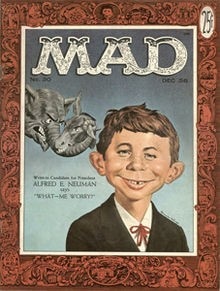 Issue #30 (December 1956) of Mad, the first one to feature the magazine’s mascot, Alfred E. Neuman. (Courtesy of Wikipedia, accessed 3-24-17.) Issue #30 (December 1956) of Mad, the first one to feature the magazine’s mascot, Alfred E. Neuman. (Courtesy of Wikipedia, accessed 3-24-17.) However, what most people who have heard the name “Al Jaffee” do not know about him is that he has led not only a highly productive and creative life, but also a most unusual life, which began in Savannah, Georgia on March 13, 1921. One of the things that makes Al’s life less-than-typical is that his childhood was split between an American English-speaking world and a small-town Lithuanian shtetl life in which Yiddish was the lingua franca for the vast majority of Jews. Al’s parents, Morris and Mildred, had immigrated to the United States sometime before World War I from the remote and impoverished Lithuanian town of Zarasai (also known by several other monikers, including: Ežerėnai [Lith.], Ezhereni [Yid.], and Novo-Aleksandrovsk [Rus.]), and settled in Savannah, Georgia, where Morris Jaffee got a job at what was initially Blumenthal’s Pawn Shop. Subsequently, it became a department store, and Morris was given a managerial position. Then in 1926, Al’s mother, whom Al described as fervently religious and far more “old world” than his Americanized father, up and took Al and his three younger brothers with her back to Zarasai. This trip only lasted until 1927; but subsequently, in 1928/29, she once again took the children with her to her hometown in Lithuania. This trip was not intended to last a long time, yet it ultimately resulted in Al and his brothers spending several of their formative years in the town referred to by different sources as “The Switzerland of Lithuania.” The Jaffee family’s final year in Lithuania culminated in a period of residence in the predominantly Jewish Kovne (Yiddish for Kaunas) suburb of Slobodka. For those interested in the history of Jewish life in Lithuania, Slobodka is perhaps most often associated with the “Slobodka Yeshiva,” which functioned from ~1881 until the outbreak of World War II. Al’s sojourn in Zarasai and Slobodka lasted until May of 1933, at which time his father returned to Lithuania to reclaim his family. Al’s father saw the handwriting on the wall, as Adolf Hitler had just come to power in January of that year, and he insisted on bringing his family back to safer grounds in the United States. Unfortunately, Al’s mother refused to return to the United States or to allow her youngest son to return in the company of her husband and other sons to the United States. The youngest son was later brought out of Lithuania in 1940, scarcely before the outbreak of The Second World War. Al’s mother, however, was murdered with the roughly 95% of Lithuanian Jewry, in the Holocaust. During the time that Al spent in Lithuania, he spoke English at home with his mother and brothers, as this had also been their spoken language at home in Savannah. Al’s father was, in fact, quite fluent in English, and even wrote letters in English for other immigrants who had not (yet) mastered the language. Al’s mother also enjoyed reading English, and asked that her husband send English-language children’s books from the United States for their four boys. Somewhat surprisingly to me, Al remarked that back home in Savannah, his family spoke English – not Yiddish – nor did he hear Yiddish spoken during his time in Savannah. This, of course, presented certain linguistic challenges when Al and his family relocated to Lithuania. Yet, even as English was the spoken tongue of home life, it was not understood by the locals in Zarasai or Slobodka. As a result, Al also had to learn colloquial Yiddish, which he spoke with his relatives, his boyhood friends, and which was spoken at the Jewish school or “kheyder” (or “cheder”) that he attended. He also learned the language, along with Jewish, and more general subject matter, from a “melamed” – a tutor – who came to the Jaffee home. As Al recalled, life in Zarasai – with the large house his family rented, replete with a sizable orchard, bearing apples, pears, gooseberries, and other such delicacies – was much like an Eastern European Jewish version of the all-American Mark Twain novels. While growing up in Zarasai, which Al described as quite primitive – a place where nearly everything, including ink and fishing rods – had to be made from scratch – he would play, go fishing, and dig for skeletons from The First World War with his friends. All of this was conducted in an unsophisticated day-to-day Yiddish. Russian and a scant amount of Lithuanian, which Al remarked that he almost never heard aside from at the local post office, were also spoken on the streets. But among Jews, life functioned entirely in Yiddish. If one needed the aid of a Gentile policeman, for example, who invariably spoke Russian, Lithuanian, or Polish, it was necessary to somehow make oneself understood in one of these other tongues. Otherwise, though, this was the linguistic exception for Jews at that particular place and time – not the norm. When the Jaffee family relocated to Slobodka in 1932 to live near other relatives, Al once again had to employ the Yiddish-speaking skills he had acquired during his years living in Zarasai. Al’s uncle owned the local “Bango Theater,” a popular entertainment site that featured films and actors from all over, including: Gustav Fröhlich, a popular German actor and film director; Clara Bow, an American actress who started out in silent films and transitioned to “talkies”; Birth of a Nation; and Nosferatu, which totally spooked Al when he saw it in his uncle’s theater. According to Al, Slobodka was a generally nice place in which to grow up, barring the fact that as Jews, it was always necessary to be on one’s guard and wear one’s armor against the potential attacks of anti-Semitic Gentiles, both children and adults. Tragically, during World War II, Slobodka would become a true ghetto for Jews, manned by Lithuanian guards, and containing over 29,000 Jews. A significant number of these individuals were murdered in the nearby Ninth Fort, while others yet were deported to additional murder sites. 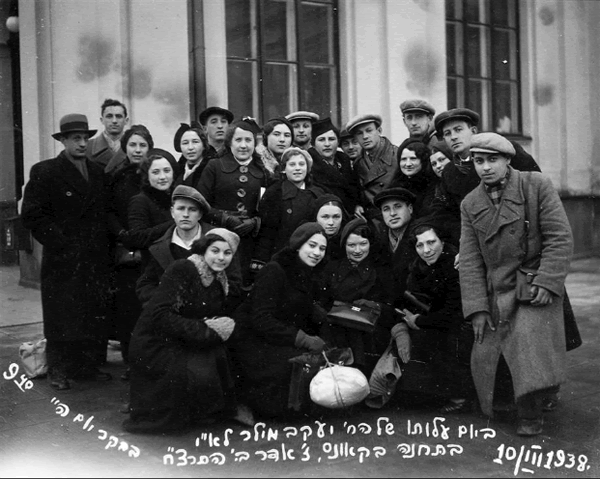 Members of Gordonia, a Zionist youth movement, accompany fellow member, Yaakov Miller, as he departs for Palestine from the Kaunas train station, 1938. Hebrew caption indicates that photograph was taken on the “7th of Adar 2,” specifically on “Thursday morning, 9:40 am.” (Courtesy of Eilat Gordin Levitan, accessed 3-24-17.) Notwithstanding the heavily Yiddish-oriented world in which Al found himself in Lithuania, he noted that the last time he actually spoke Yiddish was in 1933, at which time he – as a twelve-year-old child – returned to the United States. Nevertheless, as Al asserted, the seeds of Yiddish were evidently planted deeply enough, so that even today – all these more than eight decades later – he still often thinks in Yiddish. As he put it, “The language has many subtleties that can’t be expressed in other languages.” Al’s examples of this included the Yiddish word “tam,” which stems from the Hebrew: “ta’am.” Depending on context, the word can mean: taste, flavor, charm, or appeal. Another one of Al’s Yiddish-isms, one that was supposedly made up by Mad, was the off-color expression: “puts-rebe” (or “putz-rebbe”). This was apparently something that Al heard while growing up in Lithuania, and which was later appropriated by Al’s colleague, Harvey Kurtzman – who found the sound amusing – for their satirical publication. The expression was used in Lithuania, according to Al, to mean a “jerk of a teacher.” To this day, Al revealed, he is asked by Jews and non-Jews alike about the meaning behind the words. And yet another Yiddish expression that Al shared with me was: “Vos zogt der groyser knaker?” – meaning: “What does the big shot have to say?” 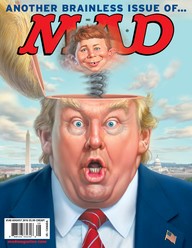 Front cover of June 22, 2016 issue of Mad. (Courtesy of Mad, accessed 3-23-17.) Front cover of June 22, 2016 issue of Mad. (Courtesy of Mad, accessed 3-23-17.) As for Al’s work as an artist-writer, this certainly predated his tenure with Mad. He was always artistic as a child – although, as Al conveyed, he does not enjoy “pretty art” – nor does he view art as a “holy business.” Rather, he sees it as a tool for communication and a vehicle for self-expression. But one of Al’s first major “breaks” in the field of artistic expression actually came from the military, when he served with the United States Army during World War II. It was during that time when he worked for the Pentagon and the Air Force Surgeon General’s office illustrating brochures, pamphlets, flow charts, and designs pertaining to physical exercises created and advocated by Colonel Dr. Howard Rusk (1901-1989), a leader in the field of physical therapy for both military personnel and civilians. Later on, Dr. Rusk and Bernard Baruch (1870-1965) would join forces to create the world-famous Rusk Institute of Rehabilitation Medicine in New York City, which continues to apply Dr. Rusk’s exercises to the medical and physical needs of civilian Americans to this day. During this same period of military service, Al came into contact with several other Jewish fellows serving alongside him, many of whom knew at least some Yiddish. One important figure in particular then was Captain Alfred Fleishman (1905-2002) of St. Louis, Missouri. Fleishman came from a Yiddish-speaking family that owned a company called “Fleishman Pickle Co.” Al recalls how Fleishman once took him to a kosher deli in Washington, D.C., and told him about his family. The two of them would throw around Yiddish terms; and from time to time, Fleishman would give him pickles that he had brought back with him from his family in St. Louis. Al made a point in stating that these types of interactions between different ranks in the military were fairly uncommon. 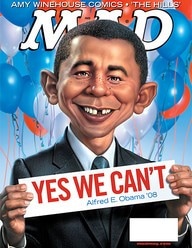 Front cover of August 20, 2008 issue of Mad. (Courtesy of Mad, accessed 3-23-17). Front cover of August 20, 2008 issue of Mad. (Courtesy of Mad, accessed 3-23-17). In looking for additional information about Captain Fleishman, I uncovered two online obituaries about him in The New York Times and the Los Angeles Times. Both of these articles attest to the fact that Fleishman cut a very decent and honorable figure, that his family operated a pickle company in Missouri, and that he was fluent in Yiddish. What came to light most, though, about Fleishman in those obituaries, is that following World War II, he was assigned by the United States military and the American Joint Distribution Committee (AJDC) – also known loosely as the “Joint” – to Austria and Germany. There, he interviewed Jewish refugees in Yiddish, collecting information for the United States government about how best to assist these individuals. Fleishman spent three months in displaced persons camps engaged in this work; and upon return to the United States, he went on a three-month national speaking tour, soliciting aid for the Jewish refugees. According to one of the obituaries, Fleishman considered heading the delegation to Germany and Austria as his greatest accomplishment. In closing, although he does not continue to speak Yiddish on a regular day-to-day basis today, as he once did in Lithuania many years ago, Al Jaffee still feels driven in his work and in his life by the “Yidishkeyt” (or “Yiddishkeit”) to which he was already exposed during his most formative years. If you have any Yiddish materials – humorous, satirical, or otherwise – that you would like translated, please feel free to contact me at: [email protected].
29 Comments
Lisa
4/2/2017 08:08:05 am
You are so fabulous, Rivka! One of the greatest things about our research is that we never know where it will take us! It's good MAD-ness :)
Reply
4/2/2017 08:11:01 am
Thanks so much, Lisa, for your ever-exuberant comments! That's precisely it: I never know quite where my research and "forays into Yiddish" will take me.
Reply
Passi Rosen-Bayewitz
4/2/2017 08:43:23 am
I love your piece on Al Jaffee! It is an incredible tale... If you have more of these stories -- you've got a fabulous book!
Reply
4/2/2017 10:47:30 am
Hi Passi,
Reply
Annette Halpern
4/2/2017 09:27:13 am
Hi Rivka, just read your research about Al Jaffee.
Reply
4/2/2017 11:30:59 am
Hi Annette,
Reply
Marlene Adelle
4/2/2017 11:36:53 am
Very interesting and well-written blog!
Reply
Rivka Schiller
4/2/2017 11:38:00 am
Thanks very much, Marlene! I could never have done it, though, without Al Jaffee. He's at the center of the story!
Reply
Jake
4/2/2017 12:38:08 pm
Fantastic! Growing up in the late 1950's, I recall that all my classmates couldn't wait for the next issue of MAD and once in our hands, we turned to the back for Al Jaffee's fold-in. Reading your article brought back one of the few positive things I remember about my childhood so I just paid for 3 subscriptions to MAD Magazine: two for each of my grandsons and the third for me.
Reply
Rivka Schiller
4/2/2017 02:17:03 pm
Thank you very much, Jake, for sharing those wonderful memories of the 1950s and of the long-reaching impact that MAD has had on you. How great that is that you are passing down this love and tradition to a future generation! I'm sure that Al Jaffee would appreciate knowing this.
Reply
Judy Ribak
4/2/2017 01:45:31 pm
I don't know how I ever missed your blog! I'm so excited to read it now. My parents came to the US after the war. They were originally from Lazdaija. I have never been able to find any of my father's family though he was one of six brothers.
Reply
Rivka Schiller
4/2/2017 02:20:04 pm
Hi Judy,
Reply
Al Jaffee
4/2/2017 03:34:32 pm
Dear Rivka,
Reply
4/2/2017 04:47:36 pm
Dear Al,
Reply
Debra Roberts
1/4/2018 08:44:42 pm
Dear Al,
Reply
Dr. Tamar Singer
4/2/2017 03:39:58 pm
Dear Rivka,
Reply
4/2/2017 04:52:05 pm
Dear Dr. Singer,
Reply
Steve Levitz
4/2/2017 04:26:44 pm
Shalom, Rivka!
Reply
Rivka Schiller
4/2/2017 04:59:37 pm
Thank you very much, Steve, for sharing your positive memories of MAD and its various hero -- Al Jaffee being one of the key players there (for several decades now). I also appreciate your sharing that information about your mother's background.
Reply
Thomas
4/2/2017 05:02:58 pm
What can I say about Al Jaffee - he's a hero of mine. When young I would borrow a friends copy of MAD (my parents would never allow me to spend money on comics) and get lost in the outrageous & humorous worlds he created on a monthly basis. You've captured the essence of his life and background, that made him who he is today. Thank you for a fascinating read.
Reply
Rivka Schiller
4/2/2017 06:00:56 pm
Hi Thomas,
Reply
Claire Weiss
4/2/2017 06:45:50 pm
Thank you so much! I am currently researching/writing a book about my mother's Holocaust experience (Kovno Ghetto) and this is so amazing!
Reply
Rivka Schiller
4/2/2017 07:17:00 pm
Hi Claire,
Reply
Susan Leven
4/3/2017 04:12:22 am
I met Al Jaffee in the 1990's when he came into a restaurant my spouse and I ran in Provincetown, MA. He and I spent some time trying to determine if we were related -- my grandfather's family was from Kaunas and my grandmother was born in Lithuania and her maiden name was Yoffe (another way to spell Jaffee). We never did figure it out, but it was such fun to meet and talk with him. Funny thing -- my grandmother's father was Morres Yoffe.
Reply
Rivka Schiller
4/3/2017 07:53:53 am
Hi Susan,
Reply
Bert Shanas
4/3/2017 10:32:03 am
Rivka: What a wonderful blog this was, with simply fascinating stories, and fantastic illustrations to accompany them.
Reply
4/3/2017 10:36:39 am
Dear Bert,
Reply
Dorothy Leivers
5/7/2017 12:47:08 am
I was sent a link to your article about Al Jaffe. Not only did I enjoy the Jaffe piece, I spent most of the day reading other items. I am going to pay a back handed compliment..... this is the only blog I have ever read where I have wanted to read more.
Reply
5/7/2017 09:00:54 am
Dorothy,
Reply
Your comment will be posted after it is approved.
Leave a Reply. |
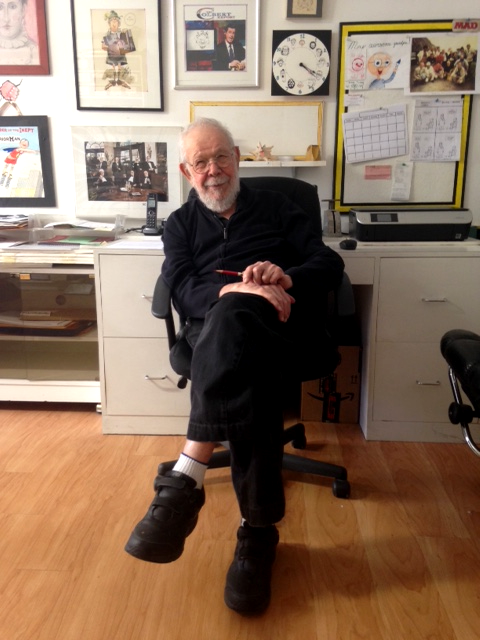

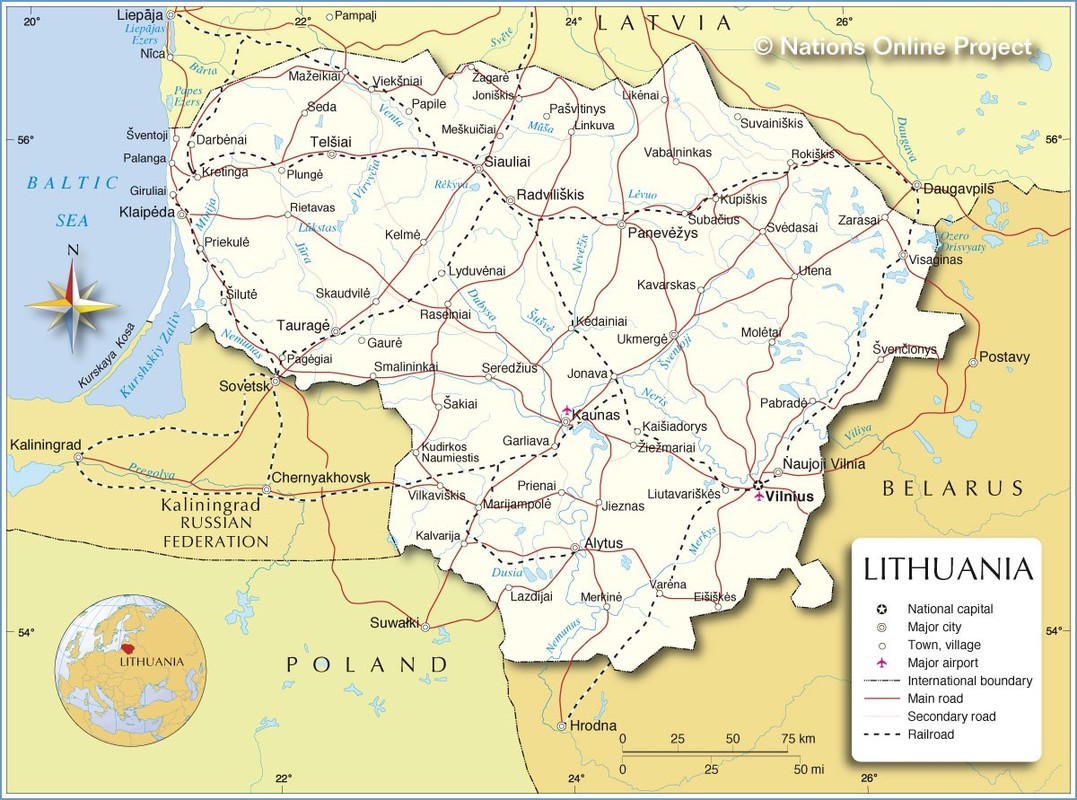


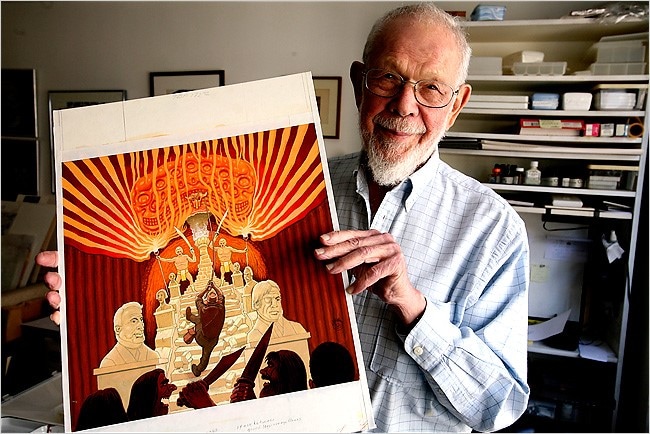
 RSS Feed
RSS Feed